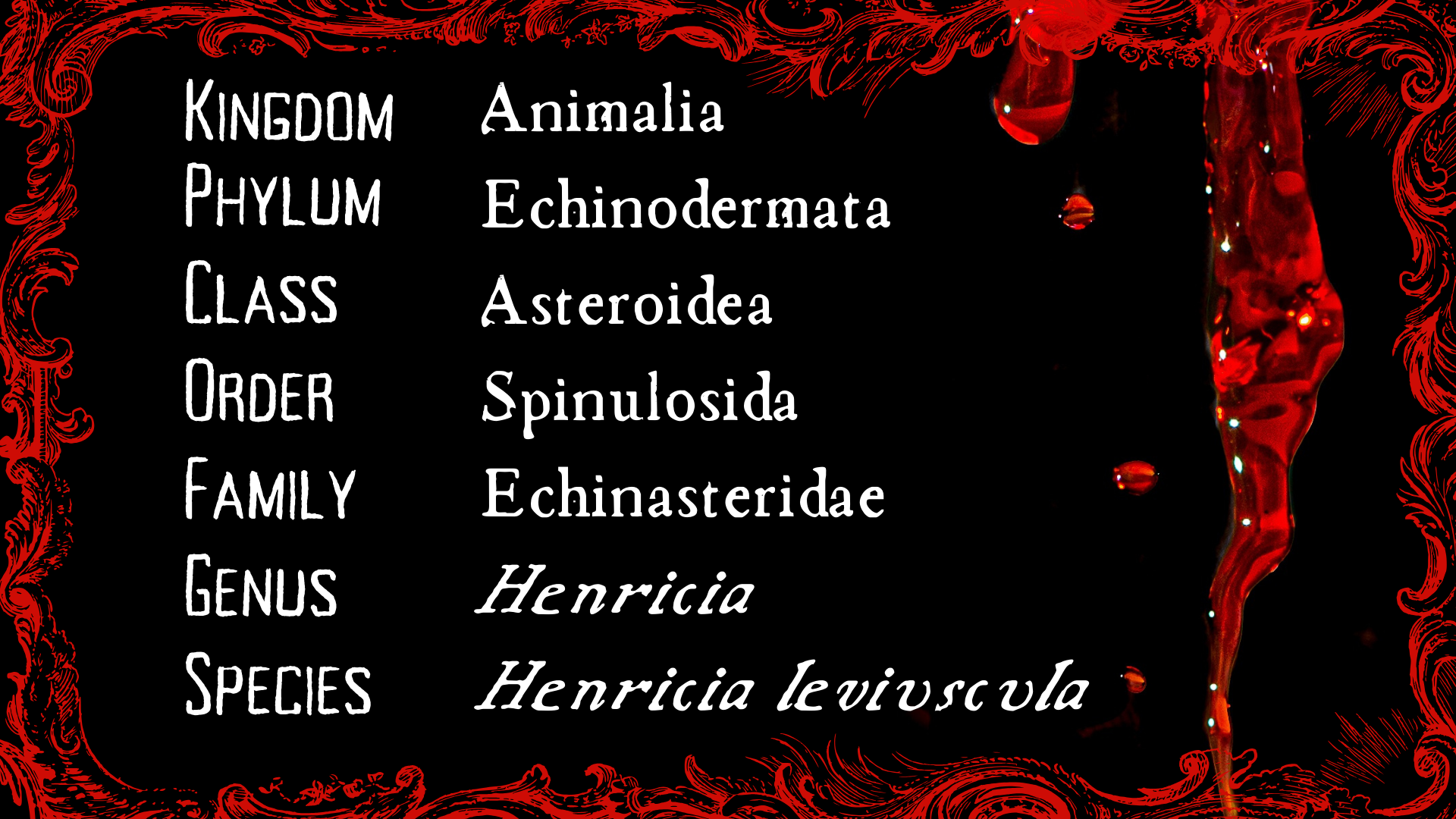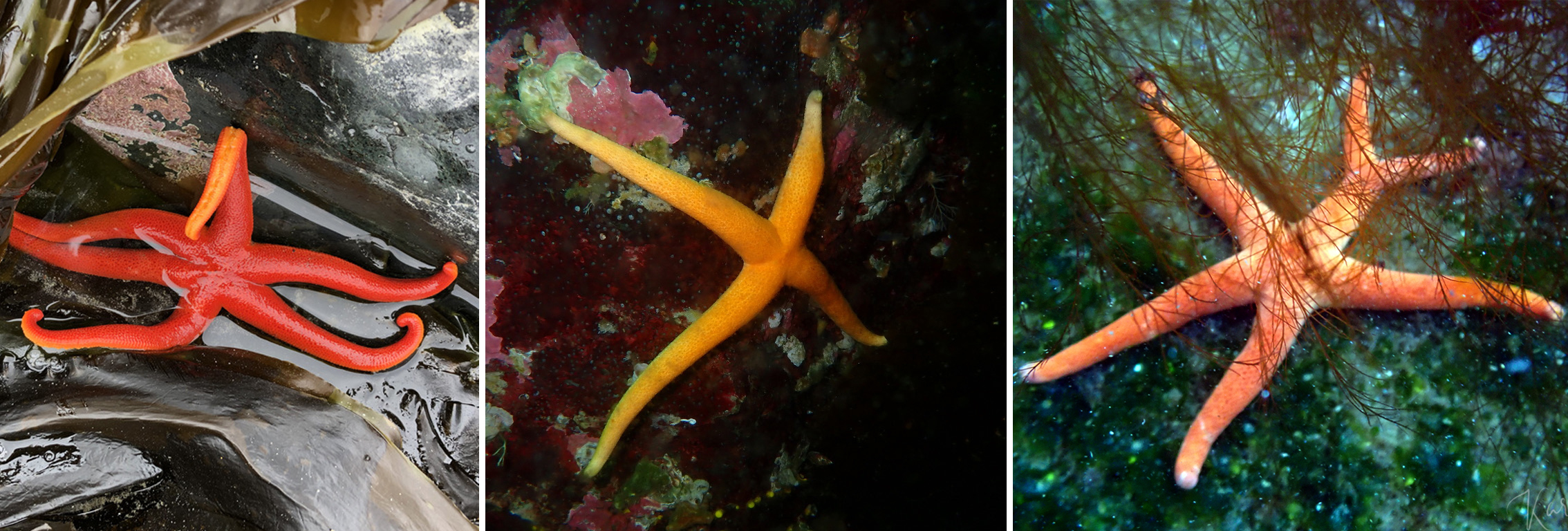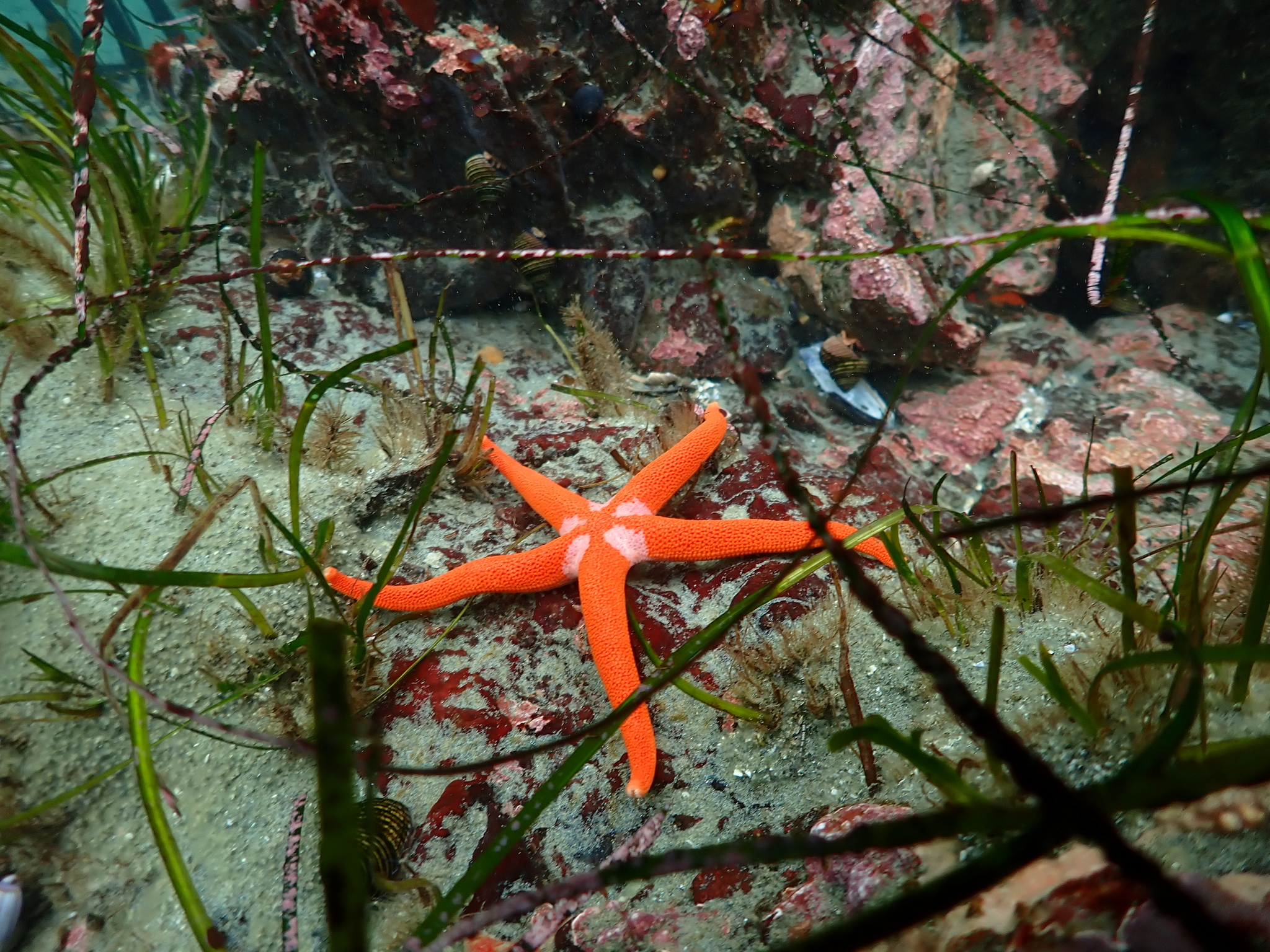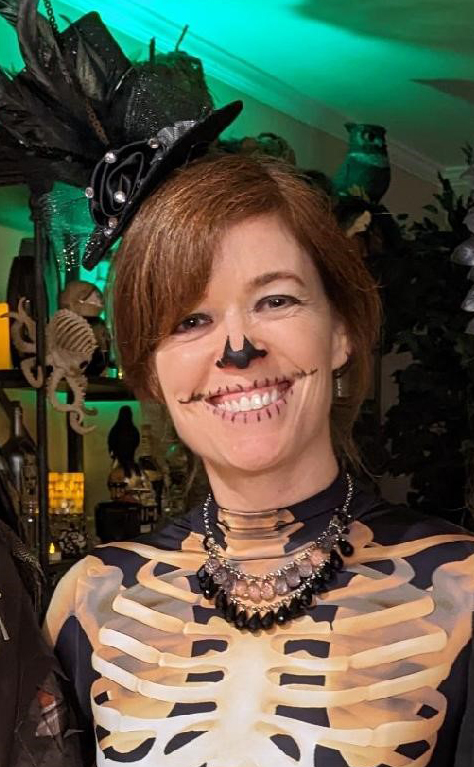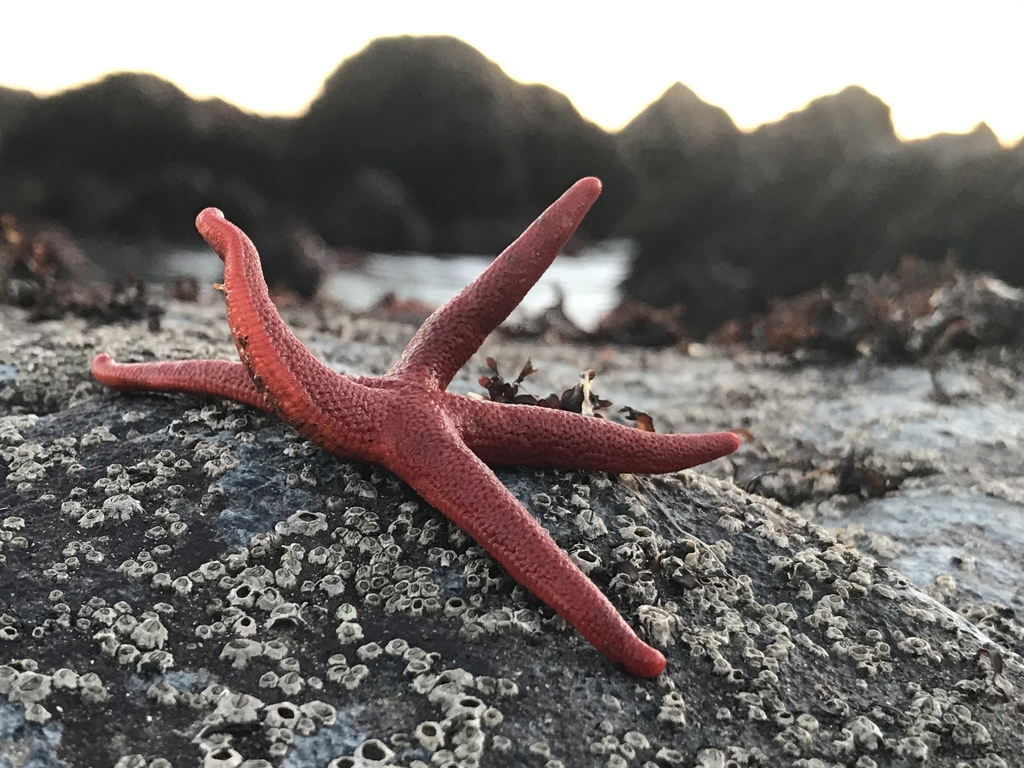
Henricia leviuscula; photo by madamcoyote via iNaturalist
It’s almost Halloween, but instead of joining the frenzied rush for costumes and candy, this taxonomist has been busy brainstorming the creepiest, crawliest bottom-dwellers that Puget Sound has to offer. Look no further than the Pacific blood star, a crimson critter with a few tricks up its spindly sleeves.
Smooth criminal
With its bright red to orange coloring, the Pacific blood star Henricia leviuscula is a recognizable sight in rocky tide pools from Alaska to Mexico. This smooth customer continues to evade capture in our benthic grab year after year by hiding out in intertidal and subtidal sediments with lots of rocks and shells, where we can’t sample.
The scientific name leviuscula actually means “smooth,” because this species is smoother than its spinier relatives. But if you pick one up, you will find it is sandpapery to the touch, and a closer look reveals skin as cratery as Freddy Krueger’s face. These small bumps and divots are formed by microscopic skeletal structures called ossicles. You might even find a marine worm called a scaleworm living in the blood star's crevices, taking advantage of the protection they provide.
A blood star’s skin is the pits! Well, it HAS pits. Photo by Dave Cowles, wallawalla.edu.
Blood from a stone
The blood star’s preference for rocks is no accident. Hard surfaces accumulate encrusting organisms like sponges, the blood star’s favorite prey. The star feeds by pushing its stomach out through the small central mouth on its underside and digesting the sponge externally (a revolting party trick that all sea stars can do).
Blood stars can also capture bacteria and other food particles in sticky mucus produced by their tube feet, and if all else fails, they can absorb dissolved nutrients in the water directly through their skin. Avoid “hanger” — always have a backup meal plan!
Blood runs cold
Although the Pacific blood star is as red as human blood on the outside, there is no actual blood in their insides… and no, they weren’t exsanguinated by tiny vampires. Sea stars have a water vascular system, meaning that they circulate their sponge dinners, nutrients, and waste by pumping seawater through a series of canals inside their bodies. The resulting hydrostatic pressure also controls movement, inflating the tube feet in their arms and allowing the sea stars to glide eerily across the sea floor.
An eye for an... arm?
Blood star arms aren’t just for walking. At their tips are tiny eyespots called ocelli that sense light (studies suggest they are more active when they sense it is daytime). Blood stars typically have five arms that they can grow back if they are lost due to predation or stress. But occasionally, it is possible to observe four-armed or even six-armed individuals that are not in the process of regenerating... or in very rare instances, true oddballs with arms that branch.
Is anyone else getting X-men vibes from these mutated monstrosities? These blood stars have odd numbers and shapes of arms. Photos by Lorivdm (left), KJ (center), and hermissenda (right) via iNaturalist
Now we got taxonomic problems, and I hope we can solve 'em
Blood star with white coloration; photo by Janel Saydam via iNaturalist
Researchers are beginning to believe that H. leviuscula may be a species complex made up of several species, including one variety with white patches in the “armpits.” But the main pieces of evidence are the conflicting reports about how Pacific blood stars reproduce — some say they release their eggs into the water like other sea stars, and others say they brood their young inside their arms. It isn’t likely that they do both, so there may be multiple species with different reproductive strategies. You might think that this mystery would be "salt in the wound" for taxonomists, but we have nothing but "mad love" for blood star biodiversity!
Critter of the Month
Wait...is that a vertebrate skeleton? No backbones allowed!
Dany is a benthic taxonomist, a scientist who identifies and counts the sediment-dwelling organisms in our samples as part of our Marine Sediment Monitoring Program. We track the numbers and types of species we see to detect changes over time and understand the health of Puget Sound.
Dany shares her discoveries by bringing us a benthic Critter of the Month. These posts will give you a peek into the life of Puget Sound’s least-known inhabitants. We’ll share details on identification, habitat, life history, and the role each critter plays in the sediment community. Can't get enough benthos? See photos from our Eyes Under Puget Sound collection on Flickr.


